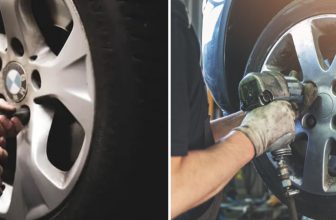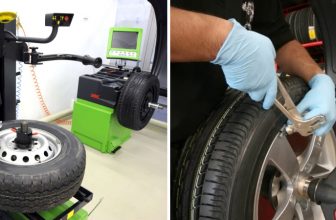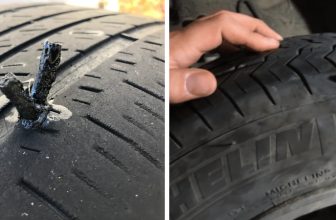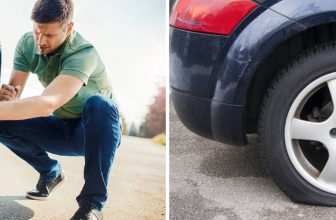How to Put on Tire Chains on A Semi
Many truck drivers, especially those driving through snowy and icy road conditions, rely on tire chains to provide the necessary traction to operate their semi. Tire chains are an essential accessory to any truck driver’s winter kit.
They are designed to provide an extra layer of grip, which increases stability and safety on the roads. If you’re new or have had limited experience handling tire chains, this guide will provide you with an in-depth understanding of how to put on tire chains on a semi.
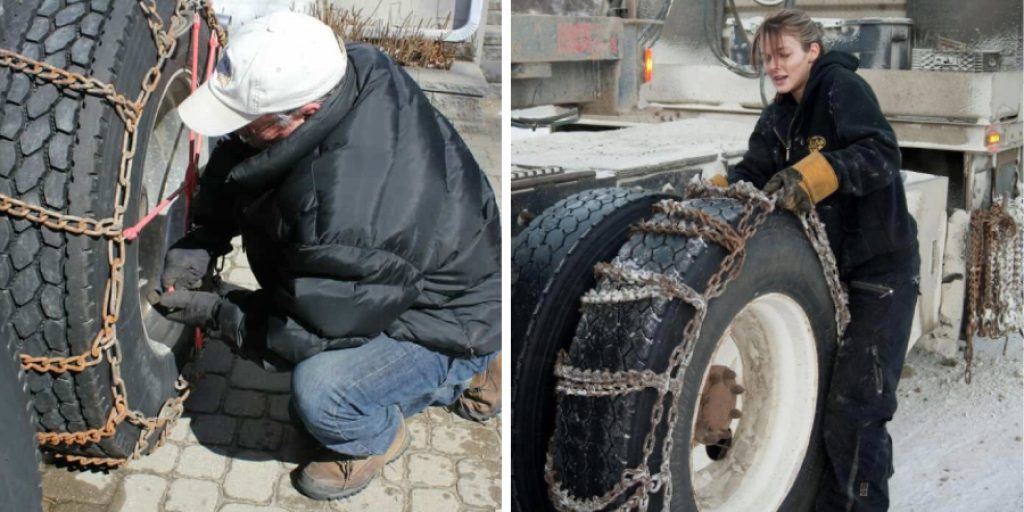
Can You Put on Tire Chains on A Semi?
Driving a semi-truck through harsh winter conditions can be challenging, but the right tools can make all the difference. Tire chains are popular for truckers who need extra traction on icy roads. The good news is that tire chains can be put on a semi-truck. But, it’s important to note that not all states allow the use of chains, and some require specific types. Before hitting the road, make sure to check the laws and regulations in your area.
Once you’ve confirmed that chains are allowed, installing them and properly ensuring they are snug and secure is important. With the right chains and a bit of preparation, you’ll be able to navigate even the toughest winter driving conditions confidently.
Why Should You Put on Tire Chains on A Semi?
Winter weather can present some serious challenges for truck drivers, especially when it comes to navigating icy and snowy roads. That’s why many professional drivers put on tire chains when the weather starts to turn.
While it may seem like a hassle to have to install these chains before hitting the road, the benefits are well worth it. Tire chains can provide extra traction and help prevent accidents caused by sliding or losing control of your vehicle.
Plus, they’re often required by law in certain areas or during specific weather conditions. So if you’re a truck driver looking to stay safe on the road this winter, consider investing in some high-quality tire chains and practicing installation before you need them.
Keeping Your Big Rig Safe: A Guide on How to Put on Tire Chains on A Semi
Step 1. Preparing Your Semi for Tire Chain Installation
The first step in putting on tire chains is to ensure your big rig is adequately prepared. Start by inspecting the area around the wheels of your semi. Ensure they are free of dirt, debris, or oil, which may cause the chains to slip. It is also crucial that your tire size matches the chain size to ensure a secure fit. Check the tire chain packaging, labels, and even your owner’s manual for the correct tire chain size.
Step 2. Installing Tire Chains
After confirming that the area around the tires is clean and dry, it’s time to install the chains. Start with laying out the tire chains where the tires will fit and identify the inside and outside chains. If you have an automatic tire chain system, this process will also work by following the manufacturer’s instructions and pressing the necessary button.
However, if you have to install the chains manually, start with positioning the chains on the inside of the tire and, working your way around the tire, ensure the chains are evenly spaced. Ensure the outer side of the chain is wrapped tightly and snugly around the tire by using the fasteners provided to secure it.
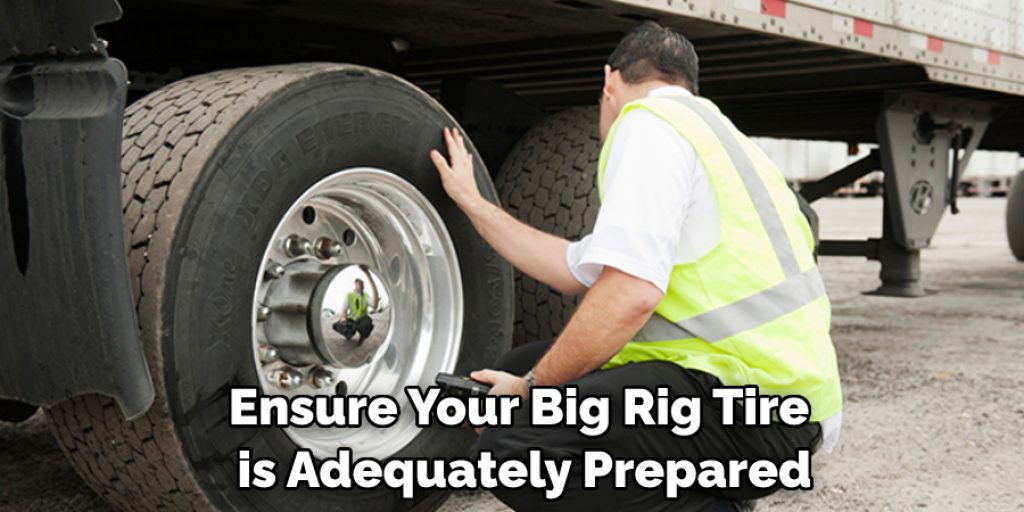
Step 3. Inspect Your Installation
Once you have installed the tire chains, it’s essential that you double-check that everything is in place and well-fitted. Check the tightness and stability of the chains to avoid any issues during your trip. If you notice any loose chains or chains that are touching the truck body, make the necessary adjustments to avoid wear and tear or potential damage to your semi and the chains.
Step 4. Taking Care of Your Tire Chains
Now that you have successfully installed your tire chains ensure they are correctly stored and maintained for the next installation. Thoroughly clean and dry the chains after every use before storing them in a dry place, free from environmental factors that may cause rusting. Proper storage prolongs the chains’ usage, ensuring that they are always in good condition for your next trip.
Step 5. Advantages of Hiring a Professional
Putting on tire chains on a semi is a technical and tricky process. It’s vital to consider hiring a professional to install the tire chains for you if you’re not confident in doing it yourself. This is especially true if you have limited experience or are new to driving a big rig. Professionals have the necessary experience and expertise in handling tire chains, and it’s an excellent investment for your safety and peace of mind on the road.
Step 6. Drive Safely
Finally, always remember to drive carefully and safely once your semi is equipped with tire chains. Be extra mindful of the road conditions and vehicle performance, as tire chains can affect traction and handling. It’s essential to keep an eye on the chains for any signs of wear or damage during your trip. Remember that when it comes to tire chains, safety should always be your number one priority.
That’s it! You’ve now learned how to put on tire chains on a semi. Following the steps outlined above will ensure your safety and peace of mind on the road and prolong your tire chains’ life. So don’t forget to invest in quality tire chains for optimal performance and drive safely! Good luck!

5 Considerations Things When You Need to Put on Tire Chains on A Semi
1. Check the Weather Conditions
Before you even think about putting tire chains on your semi, you need to check the weather conditions. If it is not snowing or icy where you are, there is no need to put the chains on. Putting chains on when not needed can damage the roads and wear out your tires unnecessarily.
2. Make Sure You Know How To Put the Chains On
Putting tire chains on a semi is not as easy as just throwing them on. There are specific instructions that need to be followed in order to ensure that they are installed correctly. If you do not know how to put the chains on, you should ask someone who does or look up a tutorial online.
3. Do Not Wait Until The Last Minute
If you wait until the last minute to put the chains on, you are more likely to make a mistake. It is best to give yourself plenty of time to take your time and ensure that everything is done correctly.
4. Be Careful when Driving
Once the chains are on, you need to be extra careful when driving. Driving too fast or making sudden movements can cause the chains to come off, which can be extremely dangerous.
5. Take the Chains Off When They Are No Longer Needed
As soon as the weather clears up and the roads are no longer icy, you must take the chains off your tires. Leaving them on for too long can damage your tires and make driving more difficult. Taking them off is just as important as putting them on in the first place.
By following these five considerations when you need to put tire chains on a semi, you can ensure that they are installed correctly and stay on while driving. This will help keep both yourself and other drivers safe during winter conditions. Remember, safety should always be your top priority!
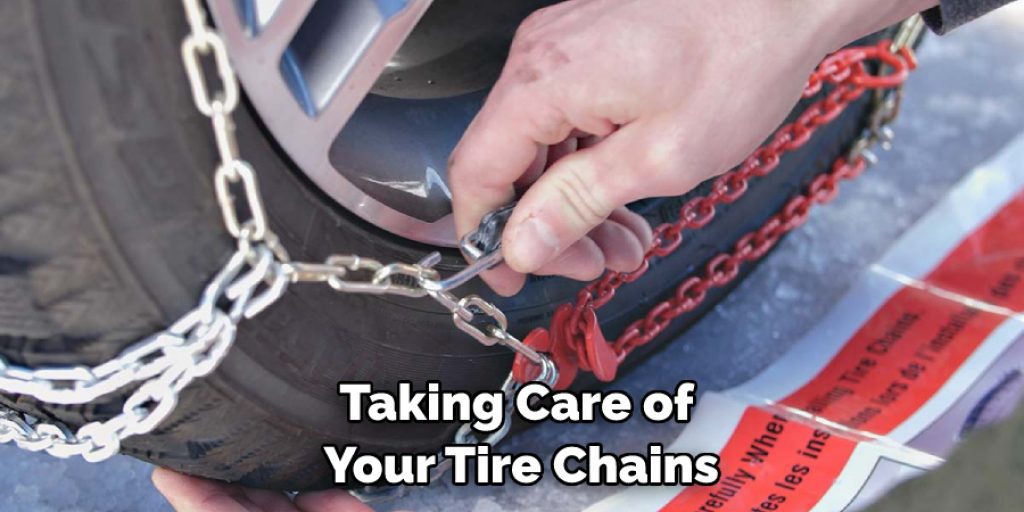
Benefits of Putting on Tire Chains on A Semi
Driving a semi-truck in harsh winter conditions can be a challenging task. It can become even more difficult when snow and ice build-up on the road, causing slippery and hazardous conditions. That’s where tire chains come in as game-changers. Tire chains, when installed properly on your semi-truck, provide much-needed traction and help prevent skidding and sliding.
They can also increase braking performance, which is especially important when driving in icy conditions. Moreover, tire chains can extend the life of your tires by reducing wear and tear, thereby saving you money in the long run. So, if you want to ensure safety and reliability while driving in challenging winter weather conditions, consider investing in a set of tire chains for your semi-truck.
Some Common Mistakes People Make When Trying to Put on Tire Chains on A Semi
Putting tire chains on a semi can be daunting, especially for those relatively new to this process. While tire chains can provide much-needed traction, there are common mistakes that people often make that can result in more trouble than they’re worth. One of the most common mistakes is attempting to put the chains on too late.
Waiting until you are stuck in the snow or ice can add frustration and waste time and money. Another common mistake is not properly securing the chains to the tires. This can lead to them falling off or moving around while driving, creating a dangerous situation for everyone on the road. With a little bit of practice and attention to detail, however, you can easily avoid these mistakes and reap the benefits of having tire chains on your semi.

Conclusion
Properly installed tire chains enhance your big rig’s safety and boost your confidence while driving in treacherous winter weather conditions. Knowing how to install them correctly will ensure a successful and hassle-free trip.
Remember to take the extra steps of preparing your semi, inspecting the installation, and caring for your tire chains afterward. With these practical tips, you’re now uniquely equipped with the necessary knowledge on how to put on tire chains on a semi. Stay safe, be cautious, and have happy travels!
You can Check it Out To Install a Tube in a Lawn Mower Tire

